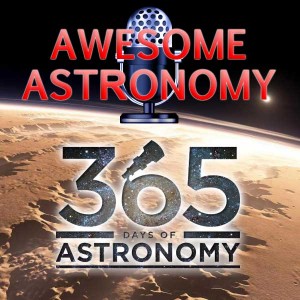Podcaster: Ralph & Paul
 Title : Awesome Astronomy’s January Sky Guide
Title : Awesome Astronomy’s January Sky Guide
Organization: Awesome Astronomy
Link : www.awesomeastronomy.com
Description: What to look out, and up, for in January.
For those in the Southern Hemisphere, 365 Days of Astronomy also play Alice Enevoldsen’s What’s Up Tonight, Southern Skies Edition each month.
Bio: Awesome Astronomy is the show for anyone and everyone who has even the slightest interest in astronomy and science.
Join Ralph & Paul twice each month, for informative and fun astronomy programs telling you what to look out (and up) for every month. You can be guaranteed a passion for astronomy, simple explanations of complex and fundamental topics, space and science news, absorbing interviews with astronomers who make the news and listeners’ astronomy questions answered
Today’s sponsor: This episode of “365 Days of Astronomy” is sponsored by — no one. We still need sponsors for many days in 2015, so please consider sponsoring a day or two. Just click on the “Donate” button on the lower left side of this webpage, or contact us at signup@365daysofastronomy.org.
Transcript:
For the beginners and young astronomers this month we take a look at the magnificent winter constellation of Orion with the belt and sword bordered by four magnificent stars. We take a look at a (cosmologically) near term supernova hopeful, a five star multiple star system, and the finest nebula of them all in small telescopes or binoculars.
Next we round up the planets that are visible in January: Jupiter rising early to show us some lovely transits of its moons, with Mars Saturn and Venus providing breathtaking views for the night owls. Saturn and Venus give us a rare close conjunction too in January.
Next we take a look at the phases of the moon this month and prepare for a conjunction with gas giant planet Jupiter and an occultation with bright star Aldebaran in Taurus.
The Quadrantids provide us with a nice meteor shower early in January which can often give us more meteors per hour than any other meteor shower.
Comet C2013 US10 Catalina continues to reveal itself to northern hemisphere observers and passes some deep sky objects to add to the excitement.
Finally, we end on our deep sky challenge in the constellation of Gemini with a planetary nebula and open clusters to tease out – including the topical Jedi Knight cluster
End of podcast:
365 Days of Astronomy
=====================
The 365 Days of Astronomy Podcast is produced by Astrosphere New Media. Audio post-production by Richard Drumm. Bandwidth donated by libsyn.com and wizzard media. You may reproduce and distribute this audio for non-commercial purposes. Please consider supporting the podcast with a few dollars (or Euros!). Visit us on the web at 365DaysOfAstronomy.org or email us at info@365DaysOfAstronomy.org. This year we will celebrate more discoveries and stories from the universe. Join us and share your story. Until tomorrow! Goodbye!

